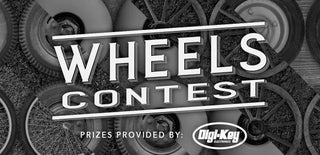Introduction: 3 Causes of Uneven Brake Pad Wear
Video tutorial on how to the three things which cause uneven pad wear. This video only applies to disc brakes assemblies. Designs may vary between disk brake and caliper designs. Uneven pad wear will shorten the life expectancy of your pads along with reducing your braking performance, therefore the issue must be solved as your vehicle is unsafe to drive. Some of these issues will not apply to all disc brake assemblies which I will point out in each issue.
Tools/Supplies Needed:
- brake cleaner
- file
- scraper
- abrasive pad
- brake specific lubricant
- socket set and ratchet
- hammer
Step 1:
There can be multiple pistons from one side on a floating caliper assembly or pistons on each side of the caliper which would be found on a fixed caliper assembly. Multi piston calipers can have one or multi pistons seize which would cause the pad to wear on an angle as it’s pushing from one side and not the other. If it is a fixed caliper assembly, a piston or pistons can stick on the one side of the rotor therefore only allowing one pad to create contact and not the other. In either situation, the safest solution is either replacing the caliper or rebuilding the unit. A used replacement caliper can be used but it’s life expectancy is unknown. Other solutions consist of rebuilding the caliper yourself if you have the proper tools for the repair, purchasing a rebuilt unit, or purchasing a new unit.
Step 2:
Not all vehicles are equipped with sliding pins because this is a feature found only on floating caliper assemblies. You will have two pins, one on each side of the caliper, these too can cause a pad to wear on an angle or a difference of pad wear on each side of the rotor. If one pin is stuck or seized, this will make a pad wear on the angle. If both pins are stuck or seized, this will not all the caliper to float, therefore only making one pad wear and not the other. The pad which will show the most wear will be on the caliper piston side. Anytime there is work done on the brakes, the sliding pins should be checked and lubricated. If the pins are too far damaged, then they will need to be replaced and can be purchased along with new boots.
Step 3:
This isn’t something that affects all carriers as they can have different designs. The carrier can become rusty or debris can build up behind the anti rattle clips. This will create tighter clearances making the pads jam completely or only on a skew. One pad may wear more than the other or they can wear on an angle. This is a fairly easy fix, but the carrier must be removed. Simply remove the anti rattle clips, ensure they are clean, and then clean in behind their location on the carrier. You may need to remove some built up road grim or rust. Sometimes this can be done using a wire brush, other times you will need to use a file. Clean up the slots, reinstall the anti rattle clips, and then test fit the pads.
If you enjoyed this tutorial, please don't forget to vote for it. Stay up to date with my latest tutorials, don't forget to FOLLOW my profile and be sure to check out my YOUTUBE page as well for all your DIY needs.

Participated in the
Wheels Contest 2017











